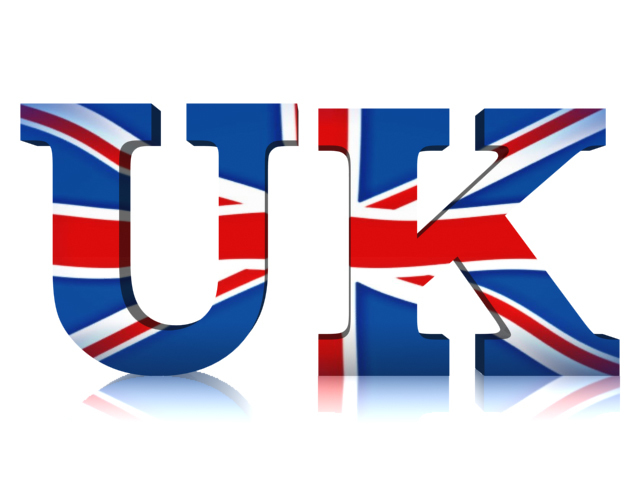Темы.
Темы, которые помогут вам общаться на языке + подготовиться к сдаче ЕГЭ и международного экзамена.
Предлагаю посетить мой сайт по подготовке к ЕГЭ: Be Ready For Your EGE
Themes
-
Theme: Advertising

Advertising techniques
Advertising does two main jobs. It tells people about something, like a product or a service and it also works to make people want to buy the product or service.
Ads (advertisements) do their jobs in many different ways. Many printed ads have headlines or boldly printed words that make people stop and read them. The headline may promise something that the reader wants, like a good price. Other headlines may carry the announcement of a new product.
Some ads use slogans that are used over and over again .They are easy to remember and often use a catchy phrase. Sometimes slogans are not related to the product.
In many ads a famous person talks about a product and tells why they use it. This person may be an actor, a model or a well-known athlete. Or they may just be an average user of a product.
Ads also compare a product with another one of the same type. The ad points out why a product is better.
Some ads feature cartoon or product characters. They may appear in an ad over a long time. The characters become well known and people identify them with a product.
Repetition is one of the most basic techniques used in the advertising business. Advertisers broadcast their commercials several times a day for days or weeks to get the message across. When people see an ad more often they may be more likely to accept the message and want the product.
Advertising media
Advertising gets to people through different forms of communication. Newspapers, magazines and direct mail belong to print media. TV, radio and the Internet are among the most important electronic media.
Newspapers
Almost half of a newspaper is made up of ads. Local papers have ads of local companies, but nationwide newspapers also advertise products that are sold all over the country. Most papers are published daily so new ads, like products on sale or movie openings can be placed every day. Newspapers sell advertising space in all sections of their paper. In most cases ads of products will be put in the section they are related to.
Display ads are big ads that can take up from a few cm to a full page. They have illustrations, headlines and lots of information on a certain field.
Classified ads appear in a separate section of a newspaper. Most of them only have a few lines and list homes, cars for sale, furniture or other things that private people want to sell or buy.
Magazines
Magazines mostly appear all over the country and are used by national advertisers. In contrast to newspapers they are read when people have more time. They are kept for a few weeks or even months. Better printing quality and colour ads are among the advantages of magazines.
Many special magazines are made for groups of people. The ads that appear there are especially for these groups. A computer magazine, for instance, may have many ads related to computers, printers or scanners.
Direct mail
Direct mail consists of leaflets, brochures, catalogs or letters, that are mailed directly to people. Mail-order companies profit from this kind of advertising. Some mailing lists send information to all the people others only have special lists according to the jobs that people have or their age or income. Direct mail costs a lot of money, but advertising companies can be sure that they will reach the people.
Radio
Local advertisers place about 70 per cent of advertising on the radio. An advantage of radio is that people listen to programs while doing other things. In some cases radios are on the whole day. Commercials last about 30 seconds. Radio stations are more specialized in what they broadcast. One radio station offers pop music and has a younger listening audience; the other may broadcast classical music with older listeners. The ads can be chosen according to the group of people who listen.
Outdoor signs
Large colourful outdoor signs can easily catch the attention of by-passers. But these ads must be short and simple because viewers see them only for a few seconds.
The main signs are posters, billboards and electronic displays. Billboards are owned by local companies that rent them to advertisers. Sometimes ads are painted on buildings. Electronic billboards have large displays where ads change very quickly. They are the most expensive kind of outdoor signs.
Television
Television combines sound and moving images. It is one of the most expensive forms of advertising, but on the other hand it reaches a very wide audience. Advertisers buy time from TV stations to broadcast their commercials. This time is cheaper at times when fewer people watch TV, as in the early morning hours and gets very expensive during prime time evening shows. Sometimes advertisers pay a lot of money to get their ads on TV during special programmes, like the Olympic Games or the Super Bowl.
Infomercials have become very popular in the last few years. They are normal TV shows that focus on the sales of certain products. Details on how to buy the product (telephone numbers etc.) are repeated many times during the programme.
Some TV stations also sell advertisers product placements. For example a brand of pizza can a car can appear in a scene of a TV show.
Internet
Internet advertising is becoming more and more important. Especially young people spend less time watching TV and more time on the Internet. The Internet has the advantage of being available to people around the world at all times.
Ads range from banners to pop-ups. Companies that spend a lot of money on advertising often create their own Internet site for a certain product. Web users are often asked to fill out a form that asks them about their daily routines, where they live, how old they are, how much they earn etc. Companies use this information to find out what kind of people visit their websites. Sometimes ads are sent via email. Because a lot of unwanted emails (spam) are sent throughout the world many people don't like this.
Production of ads
Most companies hire special advertising firms that specialize in making ads.
The first step in making ads is to learn about the product and understand who uses it.
Information is gathered from customers. Market research takes a look at the customers' buying habits and conduct sample surveys. Researchers also try to find out how customers rate various brands of products.
Research also tries to find out why customers buy a product. For example, advertisers may find out that people buy a certain car because they want to impress their friends or show that they have a lot of money. The age, sex and social status of a consumer may also be important. They also try to find out where and when a product is sold best. Snowboards for example can probably be sold better during the winter time and in skiing resorts. It is also important to determine which kind of media is best to advertise the product.
People in the creative department develop ideas and themes. They prepare photos or images if an ad is to appear in newspapers or magazines as well as jingles and slogans if it appears on radio or TV.
When the ad is ready it goes to the media organization where it is run.
Regulation
Governments have made laws that protect consumers from misleading advertising. There are also laws that ban certain kinds of advertising. Tobacco advertising, for example, is not allowed on TV in the USA and in many European countries. Some rules are directed at children's ads where the use of violence or dangerous activity is often not allowed.
-
Theme: Global Warming
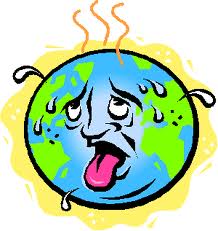
Scientists made an alarming discovery in the 1980s. They found out that the average temperature of the Earth's surface was slowly rising. This trend is called global warming. Today we know that global warming is increasing because more and more gases get into the atmosphere.
Greenhouse effect
A greenhouse is a glass house in which plants grow. The glass lets light in and at the same time keeps heat from getting out. This heat keeps the plants warm, even when it is cold outside. The same happens to the Earth's atmosphere. It lets sunlight in and keeps carbon dioxide and other gases from getting out. We need these gases but too much of them trap more heat.
Causes of global warming
For a long time people on our Earth didn't think a lot about greenhouse gases. The situation changed when people started using more and more energy in the form of fossil fuels, like oil, gas and coal. We burn fossil fuels to power factories, run cars, produce electricity and heat houses. As fossil fuels burn they let carbon dioxide into the atmosphere.
During the last few decades people have also cut down many forests. Trees use carbon dioxide when they make their own food. Fewer trees mean that less carbon dioxide is taken out of the atmosphere.
Possible effects of global warming
Scientists have different opinions on how warm the Earth's surface will really get. The increase may be between 1.5° C and 6° C by the year 2100. Warmer weather will make ice caps and glaciers melt. Sea levels could rise dramatically. Plants, animals and people living in coastal areas all could be in danger. The weather may change in many areas of the world. Floods, droughts and damaging storms could be the result.
People in colder regions might welcome warmer weather but those who live in regions that are already hot may suffer from new diseases. At the same time some animals may not survive because they cannot adapt to the new environment. They could move to other places in order to live there.
Reducing global warming
Finding a solution to solve the world's biggest environmental problem is not an easy task. Although we need energy to make our economy grow there are things that could be done to fight off this problem. Carpools or travelling by public transport could take many cars off the roads. You could turn off lights, TV sets, computers and other electrical items if you don't need them. Companies have been spending a lot of money to produce items that use little energy.
We also need to use more alternative energy, like sunlight, wind power or wave power. Car companies have started to produce a new type of cars known as hybrids. It works like an electric car but also has a small petrol engine.
The Kyoto Protocol
In 1997 over 150 countries signed the Kyoto Protocol at the United Nations Climate Conference. Industrialized countries should reduce their emissions of greenhouse gases. The United States which produces about 25% of all greenhouse gases has often made public that it will not support the agreement.
-
Theme: Hurricanes and Tropical Storms
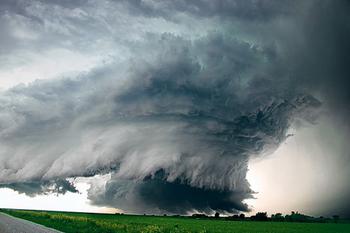
Hurricanes are gigantic tropical storms that can be hundreds of kilometres wide. They bring along very strong winds and a lot of rainfall. They often cause flooding near the coasts and sea levels rise.
Hurricanes occur in many parts of the world. In the Pacific Ocean they are called typhoons and in Australia they are willy-willies. In the Atlantic Ocean and the Caribbean Sea they are called hurricanes.
How hurricanes start
Hurricanes are born over tropical oceans, usually during late summer and early autumn. They need two things to get them started: heat and moist air.
During the summer the ocean surface heats up and warm moist air starts to rise. Cool air sinks down to replace it. This creates an area of low pressure.
The rotation of the earth creates winds around the centre of such a low pressure area. In the northern hemisphere the air moves counterclockwise, in the southern part clockwise. Such a system is called a cyclone.
When warm air rises it cools and creates clouds. Soon, thunderstorms form and it starts to rain.
All hurricanes begin as cyclones but not all cyclones become storms or hurricanes. Some die out a few days after they start. They don’t have enough energy to become a hurricane. When winds are stronger than 119km an hour a storm officially becomes a hurricane.
Structure of a hurricane
The centre of a hurricane is called the eye, a calm area with little rainfall. It is about 30 to 50km wide. Inside the eye the sea can rise up to one metre because the air moves up.
The eyewall is around the eye. This is an area of thunderstorms, rain and the strongest winds—up to 300km an hour.
Then come long bands of rain clouds that are curved towards the centre of the hurricane.
How hurricanes move
In the northern hemisphere hurricanes normally move in a westward direction and then they turn north and northeast. Their path takes them away from the warm tropical water of the equator. When hurricanes move over colder water or over land they lose a lot of their energy. They slow down and as time goes on, they disperse. In the southern hemisphere their path leads them to the south and southeast.
Hurricane names
When a tropical storm forms over the Caribbean Sea it gets a name. Every year the first storm of the season is given a name that starts with the letter A, the second storm gets a name starting with B and so on.
Years ago only women's names were used for tropical storms. Today male and female names alternate – for example, the first storm is named Alexandra, the second one Billy, then Catherine etc.
Each year new names are used so that you can connect a storm to a certain year.
Hurricane categories
| Category 1 | 119—153km/h | Winds cause only small damage to houses and building. |
| Category 2 | 154—177km/h | Storms can tear away roofs, damage doors and windows. Boats often break away from docks. |
| Category 3 | 178—209km/h | Winds can destroy mobile homes. Areas lower than 1.5 metres above sea level may be flooded. |
| Category 4 | 211—249km/h | Areas lower than 3m above sea level are flooded. Coastal areas (up to 10km) are evacuated. |
| Category 5 | more than 249km/h | These are the most powerful hurricanes. Places within 15km of the coast are evacuated. |
Hurricane damage
Hurricanes can cause a lot of damage. They bring along strong winds and heavy rainfall. In 2005, Hurricane Katrina hit the Gulf Coast and destroyed New Orleans. Many people died and hundreds of thousands had to leave the city. When a hurricane reaches land the winds can knock down small buildings, tear off roofs of houses and uproot trees. Waves produce floods around the coast. The surface water can rise up to 5 metres. This is called a storm surge.
Preparing for a hurricane
Hurricanes are causing more and more damage throughout the Gulf Region, mainly because the population is constantly growing.
When a hurricane is sighted, television and radio stations may broadcast a hurricane watch. This means that a hurricane may hit the area in the following 36 hours. If the weather gets worse there is a hurricane warning, which means that a hurricane is expected in the area in the following 24 hours.
Many things can be done to protect yourself and your property during a hurricane:
• Keep a battery-powered radio ready in case the power goes out. Listen to the instructions you get.
• Keep the gas tank of your car full, in case you have to leave quickly.
• Protect your house by nailing plywood over the windows and doors. Tie down loose objects.
• Find out which roads are best to take you away from the storm.
• Leave your house as soon as you are ordered to evacuate.
Hurricane Katrina
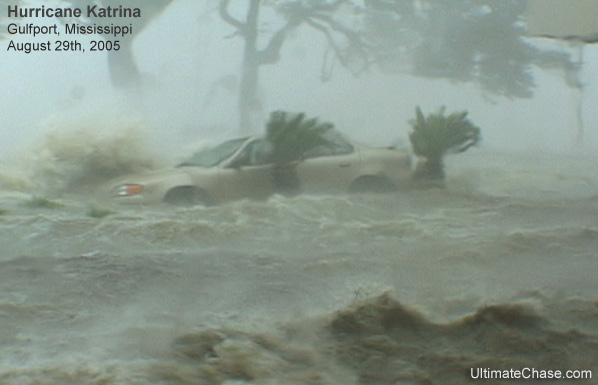
On Monday, August 29, 2005 Hurricane Katrina hit the American coast near New Orleans. The storm had formed over the Caribbean Sea almost a week earlier. As it moved on towards the American coastline it grew more and more powerful. It became a Category 5 hurricane and the fourth largest storm that has ever been recorded in the Atlantic Ocean. Winds reached speeds of over 340km an hour. Although the centre of the hurricane did not pass directly over New Orleans most of the city was flooded by the storm.
New Orleans is located in a really dangerous area. It lies above the Gulf of Mexico where many storms and hurricanes pass through. The Mississippi River also runs through the middle of the city. Because most of New Orleans lies below sea level, high banks of earth, called levees, were built around the city to protect it from flooding. Thousands of pumps have been installed to drain the water away.
Katrina brought along heavy rainfall and parts of the levee broke. About 80% of the city was flooded. Shortly before the storm hit New Orleans about 20,000 people were able to escape to the Superdome, one of the town's largest stadiums.
Most of the city's population was evacuated, but about one hundred thousand had to stay behind, mostly poor people and blacks who had no cars and couldn’t get out. They were trapped in the floods for days without power and water.
In the days after the disaster chaos spread throughout New Orleans. People broke into shops and stole things they needed, like food and water. Violence increased and gun shots could be heard throughout the city. Many people were trapped on rooftops for days before they got any help.
The government and the city authorities were not very well prepared for such a disaster. There were no plans for getting people out of the city. President Bush waited for four days before he visited the region. Thousands of people died in one of the biggest catastrophes in American history.
Greenpeace
In 1971, motivated by their vision of a green and peaceful world, a small team of activists set sail from Vancouver, Canada, in an old fishing boat. These activists, the founders of Greenpeace, believed a few individuals could make a difference.
Their mission was to «bear witness» to US underground nuclear testing at Amchitka, a tiny island off the West Coast of Alaska, which is one of the world's most earthquake-prone regions. Amchitka was the last refuge for 3000 endangered sea otters, and home to bald eagles, peregrine falcons and other wildlife.
Even though their old boat, was intercepted before it got to Amchitka, the journey sparked a flurry of public interest. The US still detonated the bomb, but the voice of reason had been heard. Nuclear testing on Amchitka ended that same year, and the island was later declared a bird sanctuary.
Today, Greenpeace is an international ecological organization that has 2.8 million supporters worldwide, and national as well as regional offices in 41 countries. Its headquarters are based in Amsterdam, the Netherlands. Greenpeace is a non-profit organization and nongovernmental. It unites people of different colours living in different continents and speaking different languages. The common mission of this organization is preserving life on the earth in its full variety.
Greenpeace does not accept donations from governments, corporations or political parties but relies on contributions from individual supporters and foundation grants. Greenpeace does not support any political party. Nevertheless, its members carry on a dialogue with all political forces and struggle for approving and passing laws for the welfare of our environment.
As a global organization, Greenpeace focuses on the most crucial worldwide threats to our planet's biodiversity and environment. It campaigns to stop climate change, save the oceans, stop whaling, say no to genetic engineering, stop the nuclear threat, eliminate toxic chemicals.
The goal of Greenpeace is to expose environmental criminals, and to challenge government and corporations when they fail to live up to their mandate to safeguard our environment and our future.
-
Theme: United Nations
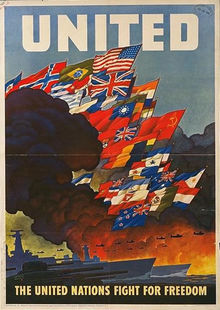
• Countries should be friendly to each other.
• Countries should help each other solve problems.
• Human rights should be respected everywhere in the world.
After the Second World War the allied countries got together to discuss in which ways such an organization could be created. In 1945 50 countries got together in San Francisco and signed an agreement that created the United Nations. The United States invited the new UN to set up its headquarters in New York. The building was finished in 1952 and has been the permanent seat of the UN until today.
Membership
Membership is open to all peace - loving nations. Today there are about 200 countries in the UN - only very few have not become members.
Switzerland joined the UN in 2002 because the Swiss always wanted to be neutral.
The main parts of the UN
There are 5 main parts in this organization:
• The Security Council
• The Economic and Social Council
• The International Court of Justice
• The Secretariat
All countries get together in the General Assembly. It normally meets once a year, but it doesn't have any real power. It discusses problems and recommends ways to solve them. In the General Assembly each country has one vote.
The Security Council is the main body of the UN. It gets together almost every day and it has the most power. Member countries must do what the Security Council decides. There are 15 members in this council – five of them are permanent: The United States, Russia, China, France and Great Britain. These countries have a right to veto anything. The other 10 members change all the time. They stay in the Security Council for 2 years.
The Security Council makes very important decisions and all the countries have to obey them. It tries to keep peace in the world and also tries to solve conflicts that endanger world peace. It also sends peacekeepers to countries where there is trouble.
The World Court makes decisions when two countries argue about something. It has independent judges that are elected by the UN.
The Secretary General has a lot of power in the UN. He is the highest official and is elected for five years by the General Assembly. He often travels around the world to settle conflicts between countries.
At present, Ban Ki-moon is Secretary General of the UN. He was elected in 2006 and comes from South Korea. Austria also had a man in charge of the UN. Kurt Waldheim was Secretary General from 1972 to 1981.
The United Nations also has many other organisations The International Atomic Energy Agency (IAEA) tries to find out if countries have atomic weapons. Its seat is in Vienna. The World Health Organisation is a UN programme to help control diseases all over the world. UNICEF is an organisation to help children in need in poor countries.
The United Nations needs a lot of money to keep up all of these organisations and programmes. It gets most of its money from the world's rich countries like the United States (about 25%), Japan, Germany, France, Great Britain and Italy. A lot of the money is used for peacekeeping missions.
In the past few years—after the end of the Cold War—the United Nations have played a more important role in the world. In 1991, the UN voted to take action against Iraq, which invaded Kuwait. But if important countries do not agree in the Security Council, like in the Iraq War of 2003, the United Nations cannot do very much to prevent conflicts.
Peacekeepers
The United Nations Peacekeeping Forces are groups of soldiers who help keep peace in places of conflict. Most of the time they are observers or soldiers who don't have so many weapons. Normally, they try to keep the enemies away from each other.
The first UN peacekeepers were sent to the Middle East in 1948 after the first war between Israel and its neighbours. After many weeks of war the UN peacekeepers were able to help make peace. Since then UN soldiers have helped patrol borders between Israel and Syria.
UN soldiers have also helped in Cyprus—a small island in the Mediterranean Sea that has mostly Greek people, but the northern part is settled by Turks. UN peacekeepers control a border that divides the north and the south of the island.
In the 1980s and 90s UN peacekeepers have helped keep peace in many countries. In the middle of the 1990s they were sent to former Yugoslavia to keep peace between the Serbs, Croats and Muslims.
UN peacekeepers are sent to a region only if the Security Council tells them to. They can only help keep peace if all the other countries agree and they may use their weapons only if they are attacked. Most of them wear a blue hat or a helmet so that you can tell if they are UN soldiers.
Since 1948 there have been 54 UN peacekeeping operations all over the world. Over 120 countries have sent soldiers.
Achievements
• The UN plays an important role in protecting our environment. The "Earth Summit" in Rio de Janeiro in 1992 was a big conference about climate control other problems of our environment.
• The International Atomic Energy Agency is a UN organisation that controls the nuclear weapons of countries and sees to it that they don't build an atomic bomb.
• Since 1950, the UN has given help to over 50 million refugees. These people had to leave their countries because of war, hunger or diseases.
• Africa is the poorest continent in our world. The UN has given African countries money and other kinds of help so that they can feed people and give them work to do.
• It helps give developing countries safe and clean water.
• It fights drug abuse and improves the lives of children who live in poverty.
• It helps people learn how to read and write.
• It helps farmers in poor countries where it is too hot or too dry.
-
Topic: Holidays in America
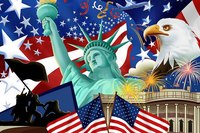
January
The first day of January is New Year's Day. This federal holiday celebrates the beginning of each New Year. People in the U.S. sometimes spend this day watching college football games and parades. On the third Monday in January, we celebrate Martin Luther King Jr.'s birthday as a federal holiday. Martin Luther King, Jr. worked to change laws so that all people in the U.S. would be treated fairly. He worked for change in the 1950s and 60s when many states had laws separating black and white people. Martin Luther King taught people to use peaceful demonstrations to change laws, instead of violence. Many laws were changed because of his work. Many people worked with him in the hope that the U.S. could be a fair country for all people.
In January or February many people in the U.S. celebrate the Chinese New Year. The Chinese New Year falls between January 10th and February 19th. The date changes because it is from a calendar based on the moon, not the sun. On this day, many families clean their homes of all the "old" and get ready for the New Year. They wear new clothes and share delicious food. They give each other red envelopes with money for good luck in the coming year. They also light firecrackers to chase away bad luck.
February
February 14th is Saint Valentine's Day. Saint Valentine's Day began in Europe and has been celebrated for hundreds of years. In the U.S. today, we remember friends and sweethearts with cards called valentines, flowers, chocolates or small gifts. We celebrate Presidents' Day on the 3rd Monday of February as a federal holiday commemorating the birthdays of George Washington and Abraham Lincoln.. We call George Washington "the father of our country" because he was the American general in the Revolutionary War who led us to victory against England. He was elected our first president. Abraham Lincoln was our 16th president. He kept our country together during the Civil War when the Southern states wanted to form a separate country. Lincoln freed the slaves with the Emancipation Proclamation.
March
March 17th is St. Patrick's Day. This holiday comes from Ireland. People wear 3-leaf shamrocks because St. Patrick used them to explain the Christian Trinity. Many people celebrate this holiday by wearing shamrocks or green clothing in honor of St. Patrick. Some people even drink green beer!
April
Holidays in the spring are celebrations of the rebirth of life. Passover is a Jewish holiday celebrated between March 13th and April 11th. Easter is a Christian holiday that is celebrated on a Sunday between March 22nd and April 25th. Christians celebrate the resurrection of Jesus Christ. In the U.S., people attend religious services and family gatherings like picnics. They hide colored eggs for children to find. Many children wake up to baskets filled with candy that the "Easter Bunny" has left for them.
May
Mother's Day is observed in the United States in honor of mothers on the second Sunday in May. Julia Ward Howe wrote a Mother's Day proclamation in 1870. She wanted to have an international day when all mothers of the world would stand up and speak for peace, so their sons would not have to die in war. In 1907, Anna Jarvis proposed a day to remember all mothers. Today, Mother's Day is a holiday to remember mothers with cards, flowers and presents.
Many people in the U.S. celebrate "el cinco de mayo". This means the 5th of May in Spanish. This holiday celebrates a battle won by Mexicans against the French. In some areas of the U.S., there are parades on this day. Many people eat Mexican food and listen to Mexican Music.
The last Monday in May is Memorial Day. Since 1868, this federal holiday has honored the Union Civil War soldiers who died. Now, we remember all soldiers who died for this country. People decorate soldiers' graves. Many people also decorate the graves of their families.
June
Flag Day on June 14th is the anniversary of the adoption of the American flag in 1777. It is not a federal holiday, although many people display flags outside their homes and in their communities. The third Sunday in June is Father's Day in the United States. Father's Day was first observed in 1910 in Spokane, Washington. This is a day when people remember their fathers with presents and cards. People celebrate with family gatherings, picnics and sports activities.
July
The Fourth of July is a very important holiday in the U.S. We celebrate the signing of the Declaration of Independence by representatives of the thirteen American Colonies. On July 4, 1776, John Hancock, Thomas Jefferson and Benjamin Franklin, well-known patriots, declared the independence of the thirteen American colonies from Great Britain. This holiday is considered the `birthday of the United States of America.' It is the greatest non-religious holiday on the U.S. We celebrate this day with fireworks and parades.
August
During the month of August there are no major holidays to celebrate. Many families go on vacation or have picnics or go to the beach. August 26th is a day that is recognized and celebrated as Equality Day by individuals or groups because of the adoption of the 19th amendment to the Constitution in 1920. This amendment granted women the right to vote.
September
September has one federal holiday, Labor Day. It honors all working people in the U.S. and Canada. It began with a New York City parade in 1882 and is now celebrated on the first Monday in September. National Grandparents Day, which honors grandparents and the love they show to their children's children, is celebrated the first Sunday after Labor Day.
October
The 2nd Monday of October is Columbus Day, celebrating the historic trip of Christopher Columbus to the Americas in 1492. Because Columbus was Italian, this federal holiday is especially important to Italian-Americans but may not be celebrated in all states. October 31st is Halloween. During the 19th century, immigrants to the United States brought Halloween customs. These customs have changed over the years. Children in costumes go from house to house saying "trick or treat." The treat usually given is candy and tricks are rarely done. A common symbol of Halloween is the jack-o-lantern, which is carved out of a pumpkin.
November
November 11th is Veteran's Day. This federal holiday honors the soldiers who fought in World War I and those who fought for the U.S. in all wars. We celebrate by displaying the American flag from our homes, having parades and decorating graves with flowers and flags. Thanksgiving Day is the 4th Thursday in November and a federal holiday. On this day we remember how the Indians helped the Pilgrims by teaching them how to farm and hunt. On this day, we give thanks for food, our country, and our families.
December
In December we celebrate holidays of light and hope in the dark winter. There is an eight-day Jewish holiday known as Chanukah during which candles are lit on each day. December 12th is the holiday of the Virgin of Guadalupe, who appeared to a poor Indian in Mexico among winter flowers.
December 25th is Christmas, celebrating the birth of Jesus of Nazareth. Many people decorate their houses with Christmas trees and lights and give presents to family members. Children hang stockings for Santa Claus (St. Nicholas) to fill with gifts. Christmas is a federal holiday. The African-American holiday of Kwanzaa is the last week of December. Candles are lit to represent the virtues of the African-American people.
As you can see, we have much to celebrate in the U.S. Many holidays are uniquely our own and many have been borrowed from other countries.

